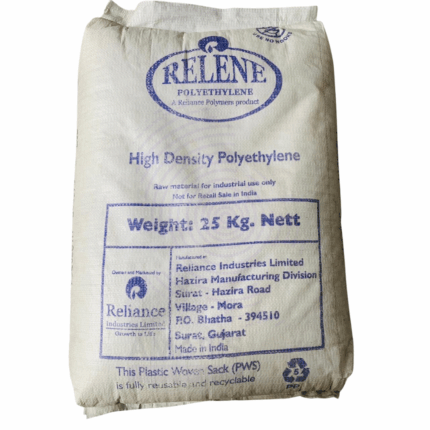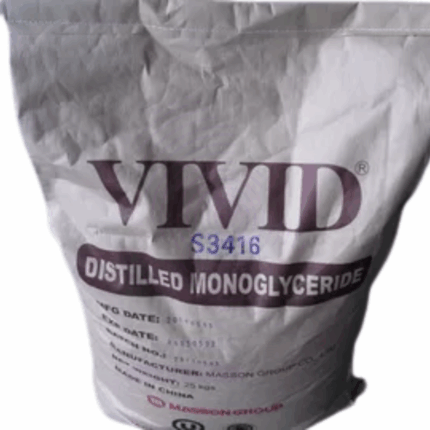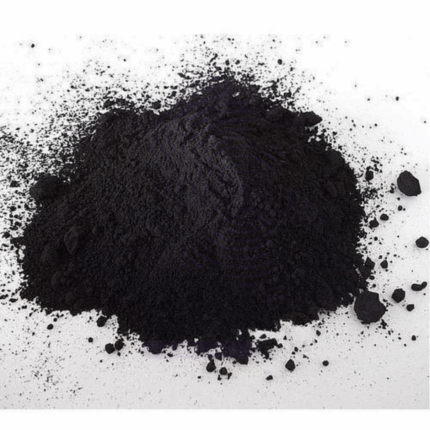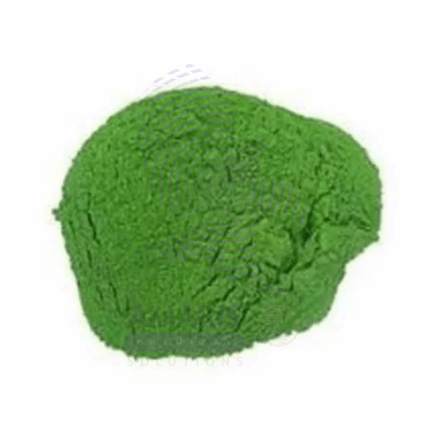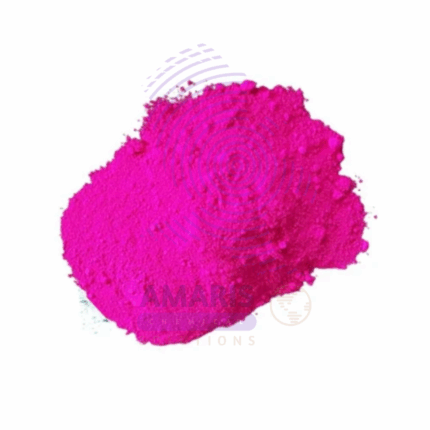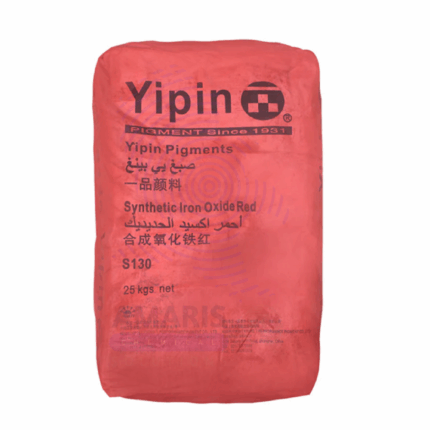Disperse Black
Disperse Black is a synthetic dye belonging to the class of disperse dyes, primarily used for dyeing hydrophobic fibers such as polyester, nylon, acetate, and other synthetic textiles. It is characterized by its fine particle size, high tinctorial strength, excellent fastness properties (wash, light, and rubbing), and ability to produce deep, uniform black shades. Disperse Black dyes are water-insoluble and applied in aqueous dispersion form during high-temperature dyeing processes. These dyes are favored in the textile industry for their vibrant colors and durability.
Disperse Black
Primary Uses
Textile Industry
- Used extensively for dyeing polyester fibers, which constitute a large segment of synthetic textiles.
- Employed in dyeing nylon, acetate, and blends containing synthetic fibers.
- Provides deep, rich black shades with excellent colorfastness properties, ideal for garments, upholstery, and technical textiles.
- Utilized in high-temperature and carrier dyeing processes, allowing uniform penetration and dye uptake.
- Applied in batch dyeing, continuous dyeing, and jet dyeing methods.
- Used for printing applications on synthetic fabrics when incorporated into disperse dye inks.Technical & Industrial Textiles
- Used for dyeing fabrics in automotive textiles, industrial filters, and outdoor fabrics that require color durability and resistance to environmental conditions.
- Suitable for high-performance textiles needing resistance to washing, light exposure, and abrasion.
Secondary Uses
Ink Manufacturing
- Incorporated into disperse dye inks for textile printing and specialized industrial printing applications.Research & Development
- Used as a model dye for testing dyeing methods, colorfastness evaluations, and textile finishing processes.Polymer & Plastic Coloring
- Occasionally used to color synthetic polymers and plastics where deep black coloration is required, although less common than in textile dyeing.
- Basic Identification Attributes
- Chemical Name: Typically a proprietary mixture of disperse azo and anthraquinone dyes designed to yield black color
- Common/Trade Name: Disperse Black
- CAS Number: Varies based on specific dye composition (common disperse blacks include CAS numbers like 12225-21-7 for Disperse Black 9)
- HS Code: 3204.19.00
- Molecular Formula: Varies by specific dye components (commonly azo, anthraquinone derivatives)
- Synonyms:
- Disperse Black dye
- Synthetic disperse dye black
- Physical & Chemical Properties
- Physical State: Fine powder or granules
- Color: Deep black
- Odor: Odorless
- Solubility: Insoluble in water; dispersible in aqueous medium with surfactants or dispersing agents
- Particle Size: Typically nano- to micron-scale for optimal dispersion
- Stability: Stable under normal storage; sensitive to strong acids and bases
- Fastness Properties: High resistance to washing, light, perspiration, and rubbing
- Safety & Hazard Attributes
- Hazard Class (GHS): May be classified as hazardous depending on composition; potential skin sensitizer or irritant
- Toxicity: Low to moderate; some disperse dyes may cause allergic reactions or sensitization
- Exposure Limits: Follow occupational exposure limits for dyes and powders
- Storage & Handling Attributes
- Storage Conditions: Store in a cool, dry place away from direct sunlight and moisture
- Container Type: Sealed bags or drums, often polyethylene-lined to prevent moisture ingress
- Shelf Life: Typically 2–3 years if stored properly
- Handling Precautions: Avoid dust generation; use PPE to prevent inhalation and skin/eye contact
- Regulatory & Compliance Attributes
- Compliance with textile and consumer safety regulations (OEKO-TEX, REACH, etc.) depends on dye purity and formulation
- Restricted use in some regions due to potential allergenic or environmental impact; verify specific dye regulatory status
- Environmental & Health Impact
- Ecotoxicity: Some disperse dyes may have moderate aquatic toxicity; proper wastewater treatment essential
- Persistence: Variable; some components may be persistent in the environment
- Bioaccumulation: Generally low potential
- Carcinogenicity/Mutagenicity: Some disperse dyes have been studied for carcinogenicity, but Disperse Black dyes commonly used have limited evidence; handling precautions recommended
Safety Handling Precautions
PPE Required:
- Dust mask or respirator (to avoid inhalation of dye powders)
- Safety goggles
- Gloves (nitrile or latex)
- Protective clothing or apron
Handling Guidelines:
- Use in well-ventilated areas or with dust extraction systems
- Avoid generating dust clouds during transfer or mixing
- Prevent contact with skin and eyes
- Follow good industrial hygiene practices
Storage Measures:
- Keep containers tightly closed
- Store away from moisture and incompatible materials such as strong oxidizers or acids
- Avoid exposure to high humidity and temperature fluctuations
Hygiene Practices:
- Wash hands thoroughly after handling
- Do not eat, drink, or smoke in the handling area
- Maintain cleanliness to prevent contamination
First Aid Measures
- Inhalation: Move affected person to fresh air; seek medical attention if respiratory irritation occurs
- Skin Contact: Wash affected area with soap and water; seek medical advice if irritation or sensitization develops
- Eye Contact: Rinse immediately with plenty of water for at least 15 minutes; consult physician if irritation persists
- Ingestion: Rinse mouth; do not induce vomiting; seek medical advice immediately
Firefighting Measures
- Fire Hazards: Non-flammable; powder form may pose dust explosion hazard under specific conditions
- Extinguishing Media: Use water spray, foam, dry chemical, or CO₂ as appropriate for surrounding fire
- Special Precautions: Avoid dust clouds; use protective equipment for firefighters
Decomposition Products: May release toxic fumes such as nitrogen oxides, sulfur oxides, and carbon monoxide upon combustion


 Preservatives(food)
Preservatives(food) Flavor Enhancers
Flavor Enhancers Acidulants
Acidulants Sweeteners
Sweeteners Antioxidants
Antioxidants Colorants(food)
Colorants(food) Nutraceutical Ingredients (food)
Nutraceutical Ingredients (food) Nutrient Supplements
Nutrient Supplements Emulsifiers
Emulsifiers
 Collectors
Collectors Dust Suppressants
Dust Suppressants Explosives and Blasting Agents
Explosives and Blasting Agents Flocculants and Coagulants
Flocculants and Coagulants Frothers
Frothers Leaching Agents
Leaching Agents pH Modifiers
pH Modifiers Precious Metal Extraction Agents
Precious Metal Extraction Agents
 Antioxidants(plastic)
Antioxidants(plastic) Colorants (Pigments, Dyes)
Colorants (Pigments, Dyes) Fillers and Reinforcements
Fillers and Reinforcements Flame Retardants
Flame Retardants Monomers
Monomers Plasticizers
Plasticizers Polymerization Initiators
Polymerization Initiators Stabilizers (UV, Heat)
Stabilizers (UV, Heat)
 Antifoaming Agents
Antifoaming Agents Chelating Agents
Chelating Agents Coagulants and Flocculants
Coagulants and Flocculants Corrosion Inhibitors
Corrosion Inhibitors Disinfectants and Biocides
Disinfectants and Biocides Oxidizing Agents
Oxidizing Agents pH Adjusters
pH Adjusters Scale Inhibitors( water)
Scale Inhibitors( water)
 Antioxidants(cosmetic)
Antioxidants(cosmetic) Emollients
Emollients Fragrances and Essential Oils
Fragrances and Essential Oils Humectants
Humectants Preservatives
Preservatives Surfactants(cosmetic)
Surfactants(cosmetic) Thickeners
Thickeners UV Filters
UV Filters
 Fertilizers
Fertilizers Soil Conditioners
Soil Conditioners Plant Growth Regulators
Plant Growth Regulators Animal Feed Additives
Animal Feed Additives Biostimulants
Biostimulants Pesticides (Herbicides, Insecticides, Fungicides)
Pesticides (Herbicides, Insecticides, Fungicides)
 Active Pharmaceutical Ingredients (APIs)
Active Pharmaceutical Ingredients (APIs) Excipients
Excipients Solvents(pharmaceutical)
Solvents(pharmaceutical) Antibiotics
Antibiotics Antiseptics and Disinfectants
Antiseptics and Disinfectants Vaccine Adjuvants
Vaccine Adjuvants Nutraceutical Ingredients (pharmaceutical)
Nutraceutical Ingredients (pharmaceutical) Analgesics & Antipyretics
Analgesics & Antipyretics
 Analytical Reagents
Analytical Reagents Solvents(lab)
Solvents(lab) Chromatography Chemicals
Chromatography Chemicals Spectroscopy Reagents
Spectroscopy Reagents microbiology-and-cell-culture-reagents
microbiology-and-cell-culture-reagents Molecular Biology Reagents
Molecular Biology Reagents Biochemical Reagents
Biochemical Reagents Inorganic and Organic Standards
Inorganic and Organic Standards Laboratory Safety Chemicals
Laboratory Safety Chemicals Specialty Laboratory Chemicals(Special Laboratory Equipment)
Specialty Laboratory Chemicals(Special Laboratory Equipment)
 Demulsifiers
Demulsifiers Hydraulic Fracturing Fluids
Hydraulic Fracturing Fluids Scale Inhibitors(oil)
Scale Inhibitors(oil) Surfactants(oil)
Surfactants(oil) Drilling Fluids
Drilling Fluids
 Dyes and Pigments
Dyes and Pigments Bleaching Agents
Bleaching Agents Softening Agents
Softening Agents Finishing Agents
Finishing Agents Antistatic Agents
Antistatic Agents
 Admixtures
Admixtures Waterproofing Agents
Waterproofing Agents Sealants and Adhesives
Sealants and Adhesives Curing Compounds
Curing Compounds Concrete Repair Chemicals
Concrete Repair Chemicals Anti-Corrosion Coatings
Anti-Corrosion Coatings
 Surfactants(cleaning)
Surfactants(cleaning) Builders
Builders Enzymes
Enzymes Solvents (Cleaning)
Solvents (Cleaning) Fragrances
Fragrances
 Electronic Chemicals
Electronic Chemicals Catalysts
Catalysts Lubricants
Lubricants Photographic Chemicals
Photographic Chemicals Refrigerants
Refrigerants Automotive chemicals
Automotive chemicals Pyrotechnic Chemicals
Pyrotechnic Chemicals
 Biodegradable Surfactants
Biodegradable Surfactants Bio-based Solvents
Bio-based Solvents Renewable Polymers
Renewable Polymers Carbon Capture Chemicals
Carbon Capture Chemicals Wastewater Treatment Chemicals
Wastewater Treatment Chemicals
 Pigments
Pigments Solvents(paint)
Solvents(paint) Specialty Coatings
Specialty Coatings Binders/Resins
Binders/Resins Additives
Additives Driers
Driers Anti-Corrosion Agents
Anti-Corrosion Agents Functional Coatings
Functional Coatings Application-Specific Coatings
Application-Specific Coatings
 Fresh Herbs
Fresh Herbs Ground Spices
Ground Spices Whole Spices
Whole Spices Spice Blends
Spice Blends Dried Herbs
Dried Herbs
 Leavening Agents
Leavening Agents Dough Conditioners
Dough Conditioners Flour Treatments
Flour Treatments Fat Replacers
Fat Replacers Decoratives
Decoratives Preservatives(baking)
Preservatives(baking)
 Plasticizers & Softeners
Plasticizers & Softeners Reinforcing Agents
Reinforcing Agents Adhesion Promoters
Adhesion Promoters Vulcanizing Agents
Vulcanizing Agents Antidegradants
Antidegradants Blowing Agents
Blowing Agents Fillers & Extenders
Fillers & Extenders Accelerators & Retarders
Accelerators & Retarders
